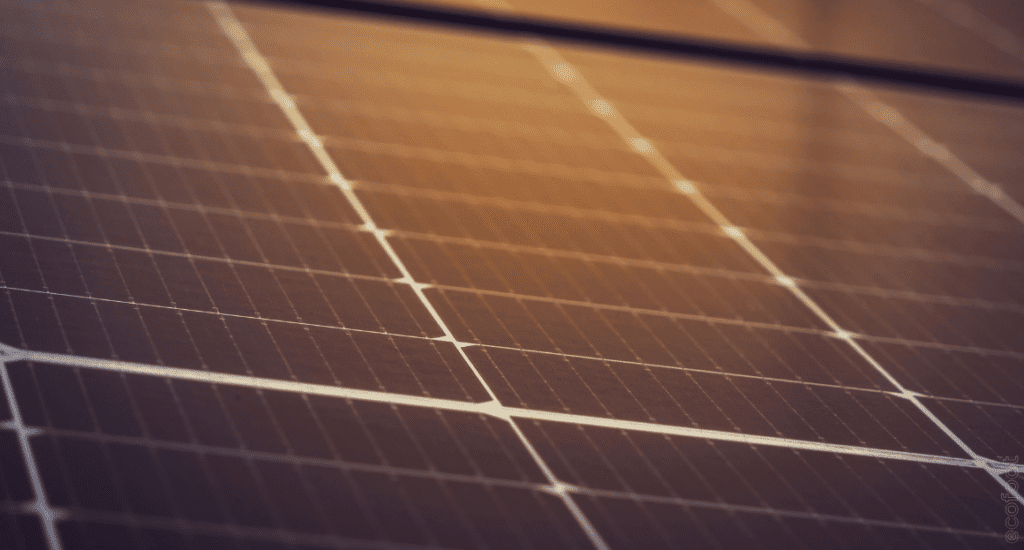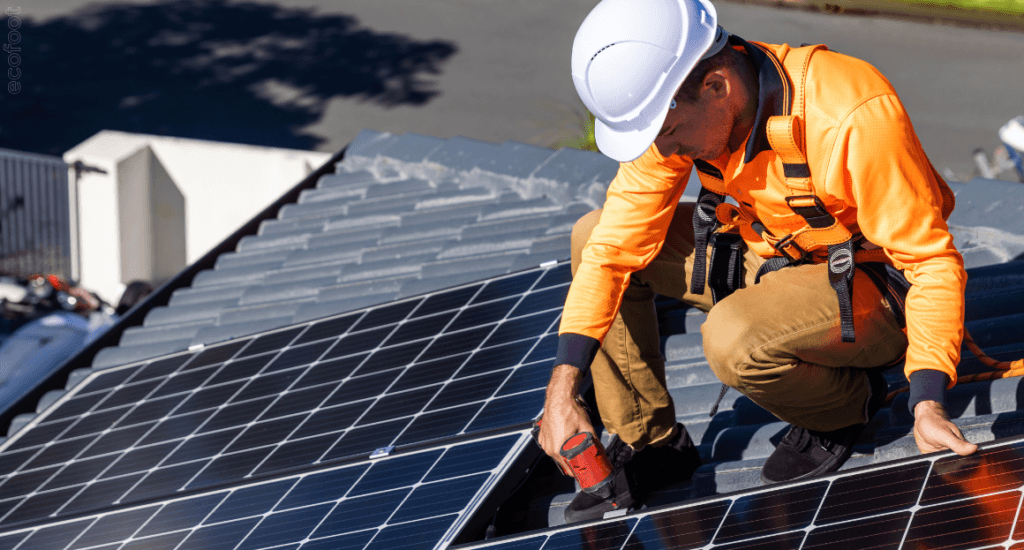
 Solar
Solar 
Year after year, electricity bill numbers climb, and with them grows the anxiety of opening that monthly or quarterly statement. Rooftop solar has shifted from being a trendy “green choice” to a practical lifeline. Many jump into solar too quickly, which can be understood with all the flashy deals we are receiving with government support. But it is important to properly plan your solar PV system.
Planning makes all the difference between a system that under-delivers and one that provides decades of reliable, clean energy. This will make sure you secure the solar rebate Victoria offers and also position yourself for long-term energy independence, protecting yourself from the volatility of power prices.
Before you rush to install panels on your roof, take a deep breath. This guide is your proven, step-by-step roadmap to planning the right system, maximising rebates, and securing a future with lower bills and fewer greenhouse gas emissions. By the end, you’ll know exactly how to plan your solar journey and how to claim the solar rebate Victoria program.
Step 1: Know Your Energy Needs
The first and most overlooked step in planning a solar PV system is understanding your own energy usage. Too many homeowners don’t give this much thought. A system that’s too small will leave you tethered to expensive grid electricity. Oversize it, and you may never recoup your investment.
Start by pulling out your energy bills. Look at your quarterly usage measured in kilowatt-hours (kWh). Notice the seasonal fluctuations:
- Homes often peak in summer due to cooling and in winter due to heating.
- Businesses may have more consistent patterns but with spikes during operational hours.
- Pay close attention to daytime versus night-time usage. Since solar panels produce power during the day, households that are at home during daylight hours (think retirees or families with small kids) can reap more immediate benefits. Businesses with steady daytime demand are particularly well-positioned.
The last thing you want is to invest thousands into a system that doesn’t match your lifestyle. Planning prevents regret.
Step 2: Evaluate Your Roof & Property
Even the most sophisticated PV systems will falter if your property isn’t suited for solar. Roof orientation enormously matters; north-facing roofs in Australia capture the most consistent sunlight. East- and west-facing can work, but expect a slight dip in production.
Shading is another nemesis. Overhanging trees, nearby apartment blocks, or even TV antennas can reduce efficiency. If one is shaded, the whole performance suffers unless optimisers or micro-inverters are used.
Check your roof’s condition. Installing solar panels on a roof due for replacement is financial folly; better to handle repairs first. For businesses, don’t overlook ground-mount options. Expansive unused land can host large-scale arrays without touching your roof.
A quick site assessment by Eco Foot will confirm if your property is solar-ready and how to design around obstacles.
Step 3: Choose the Right System Size

System size is both art and science. In Victoria, the most common residential systems are 3kW, 6.6kW, and 10kW. For businesses, options expand to 20kW, 50kW, and even 100kW setups, which are not unusual.
How do you choose? Start by matching your system to your annual usage. A 6.6kW system generates roughly 24 kWh per day on average in Melbourne conditions. If your household consumes 20 kWh daily, that’s a good fit. Oversizing can sometimes be wise if you plan to add a solar battery rebate Victoria 2025 product later.
Speaking of batteries, storage changes the calculus. The Sigenergy SigenStor Battery – 5.0 kWh & 8.0 kWh offers modular storage that allows you to capture excess daytime production and use it at night. Adding one not only deepens savings but also strengthens your household’s energy independence.
Step 4: Decide Between Panels & Battery (Now or Later)
This is where many households get tangled. Should you start with panels only or add a battery upfront?
Panels only:
- Cheapest upfront.
- Good ROI if you use most of the power during the day.
Panels + battery:
- Lets you use solar at night.
- Provides blackout protection.
- Delivers near-total energy independence.
Because of the cheaper home battery program in 2025, batteries are very affordable now. It’s a smart choice to get both together.
Even if you don’t install a battery today, plan for it. Ensure your inverter and system design are “battery ready.” Retrofitting later without planning can be a costly misstep.
Step 5: Understand Solar Rebates & Incentives
- Solar Rebate Victoria: Up to $1,400 off your system, and then you can also apply for an interest-free loan of the same amount to reduce upfront expense.
- Solar battery rebate Victoria 2025: Available for households adding storage, providing substantial discounts.
- Federal STCs (Small-scale Technology Certificates): These credits, provided by the Australian Government, cut upfront costs based on your system’s size.
- For businesses: Add in the Instant Asset Write-Off and rebates under the VEU program (Victorian Energy Upgrades).
Stacked together, these incentives often cover up to 50% of system costs. Don’t hesitate, act now.
Step 6: Choose the Right Installer / Provider
Choosing a CEC-accredited installer (Clean Energy Council) is non-negotiable. As the most trusted providers in Victoria, we help you with quality products, supply, workmanship, post-installation support and smoother rebate approvals.
Step 7: Plan for Maintenance & Monitoring
Solar is famously low-maintenance, but not maintenance-free. Panels need occasional cleaning if dust, bird droppings, or leaf litter accumulate. Inverters should be checked periodically to ensure they’re functioning optimally.
Modern monitoring systems let you track your real-time generation, consumption, and savings. It’s both practical and deeply satisfying. With modest upkeep, most solar panel systems last over 20 years and perform well.
Step 8: Prepare for Installation Day

Here’s the typical timeline:
- Site inspection (roof check, shading analysis).
- Paperwork and approvals (including your Solar Victoria rebate application).
- Grid connection approval from your energy retailer.
- Installation day: For homes, usually one day. For larger commercial arrays, up to a week.
- Testing & handover: Installer walks you through system operation and monitoring tools.
Step 9: Calculate ROI & Payback Period
A well-planned solar system is one of the best investments available to Victorians today. The average solar PV system in Victoria pays itself off in 3–6 years for households. Businesses, thanks to daytime demand and tax benefits, often recover costs in 2–4 years.
After payback, your system essentially produces free electricity. That’s decades of insulation from volatile energy markets, not to mention avoided greenhouse gas emissions. Imagine watching your meter spin backwards while your neighbours complain about bill hikes.
Step 10: Enjoy Energy Independence & Future-Proofing
Once you install this system the correct way, you will achieve energy independence. Your household or business will be shielded from bill shocks. Combined with other Victorian Energy Upgrades (such as efficient lighting, heating, and hot water systems), solar becomes the cornerstone of a well-planned strategy.
This is also a climate-conscious step. Every kilowatt-hour you produce displaces grid electricity, reducing greenhouse gas emissions and nudging Victoria closer to its 2045 net-zero target. Call us, send us your energy bills and book your free solar assessment today.
FAQs
How much does it cost to install a solar PV system in Victoria?
What size solar system do I need for a family of 4 or a small business?
Are batteries worth it in Victoria?
Do I qualify for Solar Victoria rebates?
How long does a solar PV system last?
What’s the difference between cheap and premium panels?
Other Related Blog

 Air Cons
Air Cons Having a good, comfortable house means having the right kind of heating and cooling system that works according to the weather. Cold winters, hot summers, and t

 Lighting
Lighting 5 Reasons Why Eco Foot is the Most Reliable Company in Victoria for FREE Commercial LED Upgrades If you’re a business in Victoria looking to cut costs and imp

 Lighting
Lighting The lights are already on; it’s time to make them work in your favour. Through commercial LED lighting with rebates, businesses can transform an overhead cost

 Solar
Solar The Solar Rebate Victoria via Solar Victoria is a tidy subsidy offered by the government. It’s a practical lifeline for households and small businesses squeez

 VEU Updates
VEU Updates Electricity bills have quietly become one of the biggest predators of profit margins for Victorian businesses. The creeping rise of energy costs gnaws away at y

 Hot Water System
Hot Water System When we say a water heater heat pump is water-efficient, we’re talking about how much hot water is delivered per litre of water consumed and how intelligently



